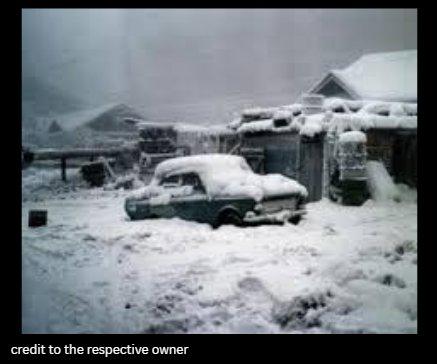In 1947, a remote village in Canada became the setting for one of nature’s most chilling displays. Snag, located in the Yukon Territory, experienced a staggering temperature drop to -83°F (-63.9°C), the coldest temperature ever recorded in North America. What followed was both eerie and extraordinary, as the brutal cold transformed the environment in almost supernatural ways.
At such extreme temperatures, everyday life turned into a kind of science experiment. The cold was so fierce that people’s breath didn’t just fog up—it crystallized mid-air, falling to the ground like frozen powder. River ice cracked and shifted violently, echoing with sounds as loud and sudden as gunshots. Even walking through the snow produced high-pitched squeaks beneath one’s boots, caused by the ultra-dry, compacted snow underfoot.
Perhaps the most surreal effect was how sound behaved. In the dense, frigid air, sound waves traveled extraordinary distances with unusual clarity. Conversations could be heard up to four miles away, as the cold compressed the air and bent sound waves instead of letting them dissipate. In those conditions, the silence of the Yukon wilderness wasn’t broken by wildlife but by voices carried clearly across miles, as if people were standing nearby.
This record-setting freeze stands as a powerful reminder of the extremes of our planet’s climate. It tested human endurance and revealed strange natural effects that only happen in such bone-chilling cold. Snag’s historic cold snap continues to be studied and remembered as one of the most remarkable weather events ever documented in North America.
